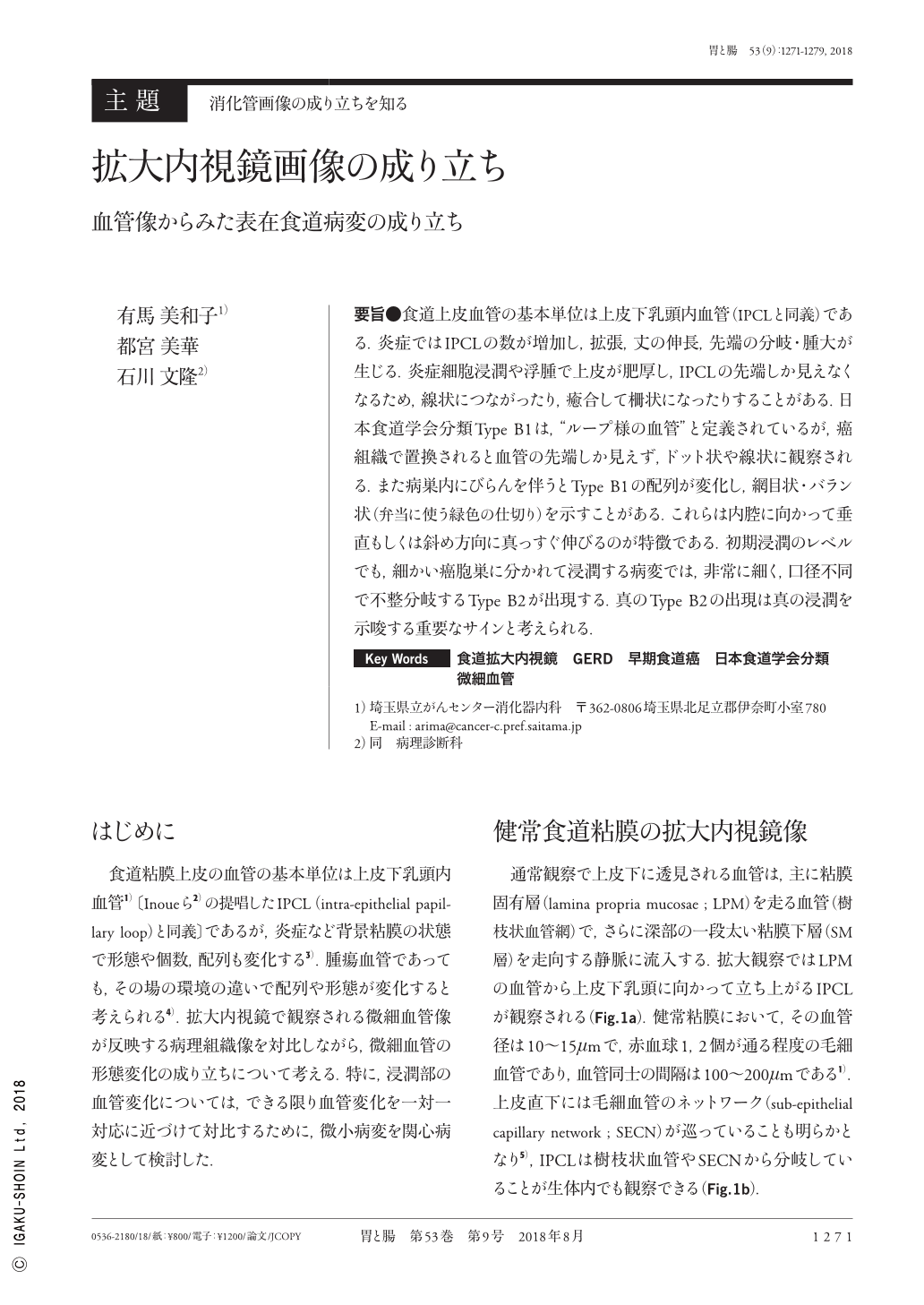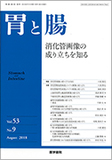Japanese
English
- 有料閲覧
- Abstract 文献概要
- 1ページ目 Look Inside
- 参考文献 Reference
- サイト内被引用 Cited by
要旨●食道上皮血管の基本単位は上皮下乳頭内血管(IPCLと同義)である.炎症ではIPCLの数が増加し,拡張,丈の伸長,先端の分岐・腫大が生じる.炎症細胞浸潤や浮腫で上皮が肥厚し,IPCLの先端しか見えなくなるため,線状につながったり,癒合して柵状になったりすることがある.日本食道学会分類Type B1は,“ループ様の血管”と定義されているが,癌組織で置換されると血管の先端しか見えず,ドット状や線状に観察される.また病巣内にびらんを伴うとType B1の配列が変化し,網目状・バラン状(弁当に使う緑色の仕切り)を示すことがある.これらは内腔に向かって垂直もしくは斜め方向に真っすぐ伸びるのが特徴である.初期浸潤のレベルでも,細かい癌胞巣に分かれて浸潤する病変では,非常に細く,口径不同で不整分岐するType B2が出現する.真のType B2の出現は真の浸潤を示唆する重要なサインと考えられる.
The subepithelial papillary vessel is a fundamental unit of the esophageal epithelium[synonymous with the intra-epithelial papillary capillary loop(IPCL)]. Inflammation increases the number of the IPCLs, expands and extends its length, divergence, and causes swelling of the tip. The epithelium thickens following inflammatory cell permeation and edema, and only the tip of the IPCL is observed. Therefore, the IPCLs appear as connected in one line or as agglutinates in a fence form. According to the classification by Japan Esophageal Society, type B1 is defined as loop-like irregular vessel. However, they appear as a series of linear dots because only the tip of the micro vessels can be visualized when the epithelium is replaced with cancer cells. B1 vessels alter their arrangement during erosion accompanying the lesion and may appear as a mesh-like pattern or a form of baran(green partition used for lunch).
These micro vessels extend in a straight fashion, either vertically or diagonally toward the lumen. Even in cases with cancer of the initial permeation level, very thin B2 vessels branch off irregularly with unequal diameters. Determining the appearance of actual B2 vessels is essential for diagnosing true permeation.

Copyright © 2018, Igaku-Shoin Ltd. All rights reserved.


